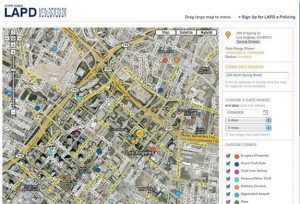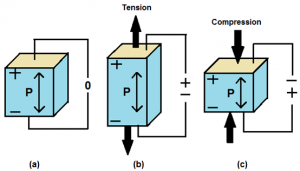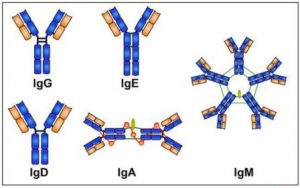Sep
30
2016
 We are in an interesting time in human history with regard to humans in space. We have space programs. We have been to the moon, and we have a continuous presence in low-earth orbit. But we haven’t colonized space or any other world. We are thinking about it, and some people are even planning it, but no clear program yet.
We are in an interesting time in human history with regard to humans in space. We have space programs. We have been to the moon, and we have a continuous presence in low-earth orbit. But we haven’t colonized space or any other world. We are thinking about it, and some people are even planning it, but no clear program yet.
What this means is that we are probably in the period of maximal speculation. We have a lot of information about space and space travel, and some experience, but we do not yet have any experience with actual colonization.
As is often the case, much of the speculation takes the form of science fiction. The Martian was an excellent novel and book that tried to seriously explore the issue of surviving on Mars (with some concessions made for narrative purposes).
The best speculation I have seen is in the recent TV series The Expanse. This takes place a couple of hundred years in the future, when humans have colonized our solar system. There is no magic high-tech to make the problems they would encounter go away. There is no artificial gravity, transporter, warp drive, force fields, or anything similar. They get by with extrapolations of existing physics and technology.
Continue Reading »
Sep
29
2016
 If police could predict when and where crimes are likely to occur, they could deploy their resources to maximal efficiency and be in the right place at the right time to stop crime. If they could predict who is likely to commit a crime, they could perhaps intervene with social services to prevent crime.
If police could predict when and where crimes are likely to occur, they could deploy their resources to maximal efficiency and be in the right place at the right time to stop crime. If they could predict who is likely to commit a crime, they could perhaps intervene with social services to prevent crime.
This is the hope of predictive policing, which seeks to leverage big data and powerful computer algorithms to aid police. This is often compared to the move Minority Report, but that is actually a bad analogy. In the movie the crime unit used three psychics to predict exactly who would commit a specific crime at a specific place and time. That is nothing like predictive policing.
If you insist on using a science fiction analogy, the series Person of Interest is much closer. In that series the government possess a powerful computer program that is fed all of the surveillance data in the country and uses it to predict when a crime is about to happen. It then spits out a social security number of someone who is about to become either a victim or a perpetrator, the “person of interest,” and our heroes have to figure out and stop the crime. It’s a good narrative device, but not very realistic (at least not anytime soon). Continue Reading »
Sep
27
2016
 By now you have probably heard of the idea of making solar roads, essentially paving roads with hardened photovoltaic plates that will not only power the roads themselves (heat and light them) but provide clean energy. The idea has a certain appeal, but seems impractical (at least with current technology) and certainly should not be a priority before picking much lower hanging fruit, like putting solar panels on rooftops.
By now you have probably heard of the idea of making solar roads, essentially paving roads with hardened photovoltaic plates that will not only power the roads themselves (heat and light them) but provide clean energy. The idea has a certain appeal, but seems impractical (at least with current technology) and certainly should not be a priority before picking much lower hanging fruit, like putting solar panels on rooftops.
While I might be critical of the idea itself (critical in a constructive way), I applaud the act of coming up with new and interesting ideas. Most new ideas are going to fail, especially if they are truly innovative. In order to find the great ideas that are going to work we are going to have to climb a mountain of failed ideas. It’s just part of the process. For this reason I always have a soft spot for people who think up crazy new schemes (as long as they are not based on magic or pseudoscience), and will praise the process even when I shoot down the idea itself.
The Piezoelectric Effect
With that in mind, recently the The California Energy Commission granted $2 million to study the feasibility of putting piezoelectric crystals in roads as a way to generate clean energy. This probably won’t work, but that’s OK. The study is probably worthwhile anyway. Continue Reading »
Sep
26
2016
 If you have a child in school then you have probably already noticed how common perceived food allergies are. Every year we get a list of foods that are banned from the school because of reported allergies. Peanuts are the most common. This is a reasonable policy for the school as genuine food allergies can cause life-threatening anaphylactic reactions.
If you have a child in school then you have probably already noticed how common perceived food allergies are. Every year we get a list of foods that are banned from the school because of reported allergies. Peanuts are the most common. This is a reasonable policy for the school as genuine food allergies can cause life-threatening anaphylactic reactions.
It has also been known for a long time that the number of people who perceive that they or their children have a food allergy (35%) is far greater than the number of people who have proven allergies (2-5%).
A recent review of the literature, published in the Canadian Medical Association Journal, takes aim at one factor contributing to this gap between public perception and medical reality – IgG antibody testing. Continue Reading »
Sep
23
2016
 Tardigrades (also called water bears or moss piglets) are one of the coolest animals on earth. They are microscopic, live pretty much anywhere there is water, and are “extremotolerant.” When they lack water they just dry up, and their dessicated form can survive extremes of temperature, high pressure, and even the vacuum of space. Just add water back, and they plump up and go about their business.
Tardigrades (also called water bears or moss piglets) are one of the coolest animals on earth. They are microscopic, live pretty much anywhere there is water, and are “extremotolerant.” When they lack water they just dry up, and their dessicated form can survive extremes of temperature, high pressure, and even the vacuum of space. Just add water back, and they plump up and go about their business.
They are also very tolerant to radiation, an enviable property. Recently scientists studied the tardigrade genome – more specifically, R. varieornatus, which is one of the hardiest species. There are about 1000 known species of tardigrades and probably a couple thousand more waiting to be described. They had a couple of questions.
First, they wanted to follow up on prior research showing that tardigrades have an extremely high percentage of genes acquired through horizontal transfer from bacteria. This result was not replicated in the current study, which found a very low amount, only about 1.3%. The higher result had already been called into question by other researcher, and this it pretty much the final nail in the coffin.
Continue Reading »
Sep
22
2016
 Mark Zuckerberg, the founder of Facebook, and his wife, Priscilla Chan, recently announced their initiative to “cure, prevent or manage all diseases by the end of the century.”
Mark Zuckerberg, the founder of Facebook, and his wife, Priscilla Chan, recently announced their initiative to “cure, prevent or manage all diseases by the end of the century.”
That is a fairly ambitious goal, to say the least, but coming from someone with the resources of Zuckerberg it’s worth exploring what he actually intends to do. To start, he plans on investing $3 billion in medical research. That is a serious investment.
To put that in perspective, however, the NIH 2017 budget is $34.1 billion, an increase of $2 billion over 2016. That includes $1.39 billion for Alzheimer’s research alone. The NIH spent over $500 billion dollars since 2000.
So, while the Chan Zuckerberg Initiative is generous and is likely to have a positive impact, it is hard to imagine how $3 billion will accomplish what $500 billion has not. It’s not as if there aren’t thousands of medical researchers around the world already trying to prevent, cure, and manage disease.
Continue Reading »
Sep
20
2016
 I first remember really being interested in superconductivity in 1986, the same year many people probably first heard about it. Prior to that superconductivity, a property of matter in which electricity conducts without resistance and therefore without energy loss, was an obscure notion in physics.
I first remember really being interested in superconductivity in 1986, the same year many people probably first heard about it. Prior to that superconductivity, a property of matter in which electricity conducts without resistance and therefore without energy loss, was an obscure notion in physics.
In 1986, however, Alex Müller and Georg Bednorz, researchers at the IBM Research Laboratory in Rüschlikon, Switzerland, created a ceramic conducting material that was superconducting at the relatively high temperature of 30 K (-243 C). Prior to that the record was held by a vanadium-silicon alloy at 17.5 K.
Suddenly all the popular science magazines were filled with images of supermagnets, with headlines about the new science of ceramic conductors, of “high temperature” superconductors, and what the eventual goal of room temperature superconductors will mean for modern technology. Here we are 30 years later and I’m still waiting.
I also now have a much more developed sense of how technology advances, and how the popularizing of technology is often over-hyped and distorted. I was made to feel by the reporting that room temperature superconductors were inevitable and just around the corner. History has shown, however, that such predictions are highly problematic. Advances often take longer than we think, and progress tends to be sporadic rather than linear.
Continue Reading »
Sep
19
2016
Researchers at Harvard did a clever thing. They created a giant plate on which to grow bacteria, and included in the plate increasing concentrations of an antibiotic as you moved toward the center. They then plated bacteria on the outer edges and made a time-lapse video of the bacteria growing.
The end result was a video showing the evolution of progressive antibiotic resistance in the bacteria. You can actually see adaptive radiation, as the bacteria push up against the boundary to the next higher concentration of antibiotics, then multiple locations start to spawn new colonies spreading in the next zone.
The researcher made some more nuanced observations as well. For example, the bacterial grow slowed with new mutations, meaning they sacrificed something with the resistance mutation, but then they sped up again as they further evolved. Further, the most resistant bacteria were often not at the leading edge but were stuck behind less resistant bacteria.
Continue Reading »
Sep
16
2016
 German company Bayer has successfully bid to buy Monsanto for $66 Billion. This merger represents the latest in the consolidation of the biotech industry that has been going on feverishly in the last few years.
German company Bayer has successfully bid to buy Monsanto for $66 Billion. This merger represents the latest in the consolidation of the biotech industry that has been going on feverishly in the last few years.
I have more questions than opinions about this merger, but there are some points worth discussing.
Consolidation
Every article and opinion I have read about the merger characterizes it as a bad thing, as a symptom of a dropping agricultural market. The story being told is this: as crop production has increased, the price of major crops in the market has decreased. This has squeezed farmers, who in turn buy less biotech products, which squeezes the seed and fertilizer companies.
Continue Reading »
Sep
15
2016
 Lawrence Krauss recently wrote an editorial in The New Yorker about how Lamar Smith, a congressman from Texas and chairman of the House Committee on Science, Space, and Technology, is harassing scientists who are providing data on global warming.
Lawrence Krauss recently wrote an editorial in The New Yorker about how Lamar Smith, a congressman from Texas and chairman of the House Committee on Science, Space, and Technology, is harassing scientists who are providing data on global warming.
The story that Krauss tells is very clear – Smith is a Republican who receives more money from the oil industry than any other industry, he is a Christian Scientist, and he is a global warming denier. Last year the National Oceanic and Atmospheric Administration (NOAA) published a paper in Science in which they show data that indicates there never was a global warming pause and that the world is continuing to warm.
The response of Lamar Smith was to accuse the scientists of lying, of altering the data to suit the political agenda of the administration, and to subpoena their internal communication (they had already turned over their data). In the subpoena Smith writes: Continue Reading »
 We are in an interesting time in human history with regard to humans in space. We have space programs. We have been to the moon, and we have a continuous presence in low-earth orbit. But we haven’t colonized space or any other world. We are thinking about it, and some people are even planning it, but no clear program yet.
We are in an interesting time in human history with regard to humans in space. We have space programs. We have been to the moon, and we have a continuous presence in low-earth orbit. But we haven’t colonized space or any other world. We are thinking about it, and some people are even planning it, but no clear program yet.
 If police could predict when and where crimes are likely to occur, they could deploy their resources to maximal efficiency and be in the right place at the right time to stop crime. If they could predict who is likely to commit a crime, they could perhaps intervene with social services to prevent crime.
If police could predict when and where crimes are likely to occur, they could deploy their resources to maximal efficiency and be in the right place at the right time to stop crime. If they could predict who is likely to commit a crime, they could perhaps intervene with social services to prevent crime. By now you have probably heard of the idea of making solar roads, essentially paving roads with hardened photovoltaic plates that will not only power the roads themselves (heat and light them) but provide clean energy. The idea has a certain appeal,
By now you have probably heard of the idea of making solar roads, essentially paving roads with hardened photovoltaic plates that will not only power the roads themselves (heat and light them) but provide clean energy. The idea has a certain appeal,  If you have a child in school then you have probably already noticed how common perceived food allergies are. Every year we get a list of foods that are banned from the school because of reported allergies. Peanuts are the most common. This is a reasonable policy for the school as genuine food allergies can cause life-threatening anaphylactic reactions.
If you have a child in school then you have probably already noticed how common perceived food allergies are. Every year we get a list of foods that are banned from the school because of reported allergies. Peanuts are the most common. This is a reasonable policy for the school as genuine food allergies can cause life-threatening anaphylactic reactions. Tardigrades (also called water bears or moss piglets) are one of the coolest animals on earth. They are microscopic, live pretty much anywhere there is water, and are “extremotolerant.” When they lack water they just dry up, and their dessicated form can survive extremes of temperature, high pressure, and even the vacuum of space. Just add water back, and they plump up and go about their business.
Tardigrades (also called water bears or moss piglets) are one of the coolest animals on earth. They are microscopic, live pretty much anywhere there is water, and are “extremotolerant.” When they lack water they just dry up, and their dessicated form can survive extremes of temperature, high pressure, and even the vacuum of space. Just add water back, and they plump up and go about their business. Mark Zuckerberg, the founder of Facebook, and his wife, Priscilla Chan, recently announced their initiative to “cure, prevent or manage all diseases by the end of the century.”
Mark Zuckerberg, the founder of Facebook, and his wife, Priscilla Chan, recently announced their initiative to “cure, prevent or manage all diseases by the end of the century.” I first remember really being interested in superconductivity in 1986, the same year many people probably first heard about it. Prior to that superconductivity, a property of matter in which electricity conducts without resistance and therefore without energy loss, was an obscure notion in physics.
I first remember really being interested in superconductivity in 1986, the same year many people probably first heard about it. Prior to that superconductivity, a property of matter in which electricity conducts without resistance and therefore without energy loss, was an obscure notion in physics. German company Bayer has successfully bid to
German company Bayer has successfully bid to Lawrence Krauss recently wrote an
Lawrence Krauss recently wrote an 




